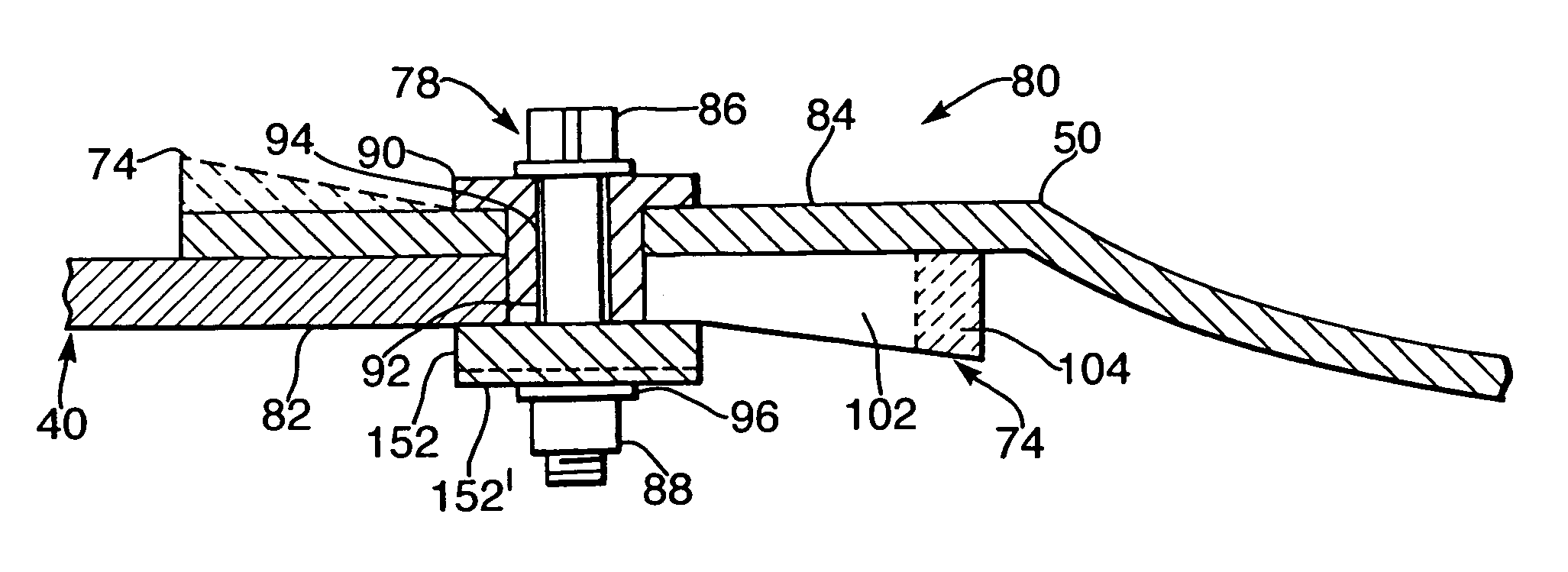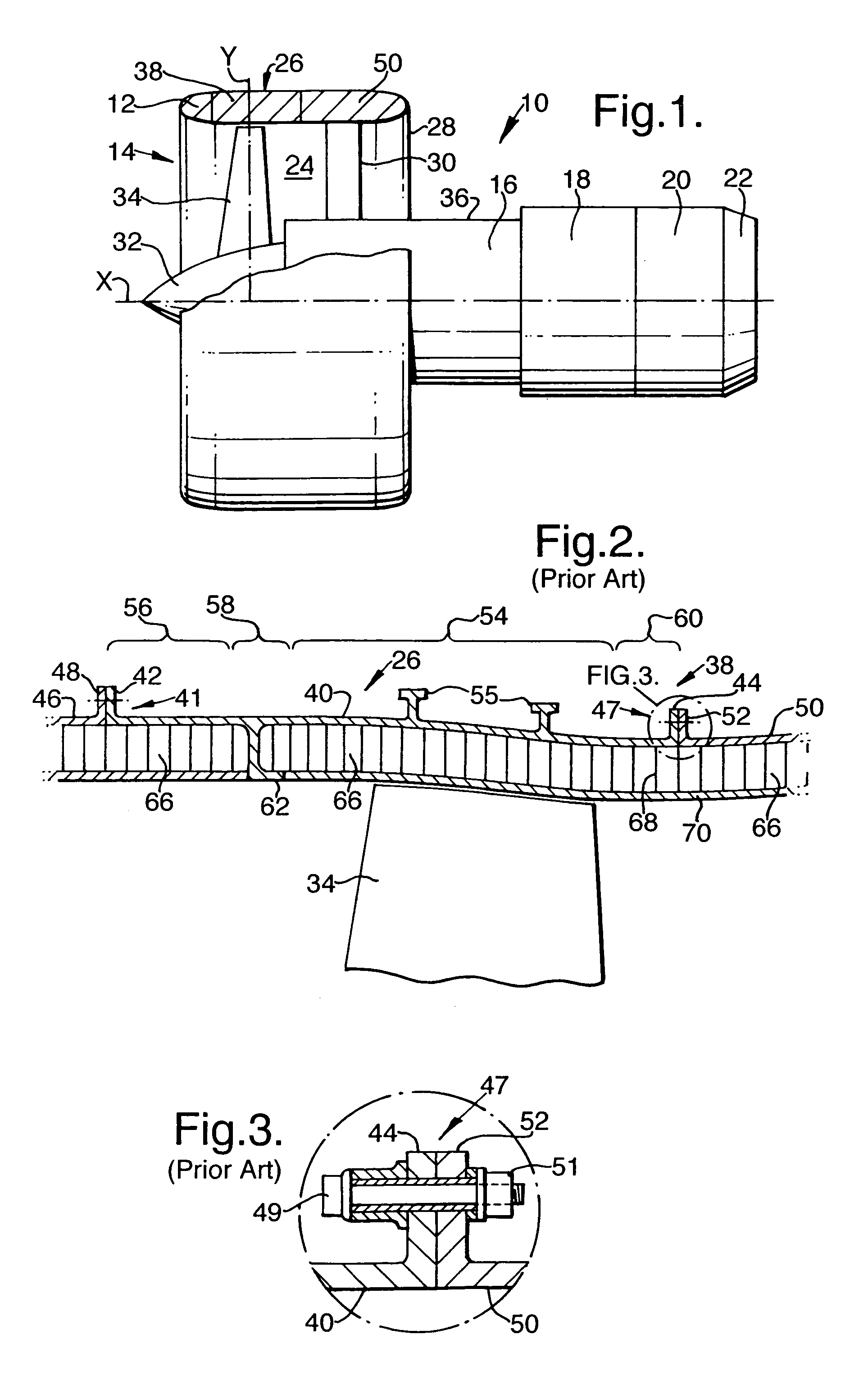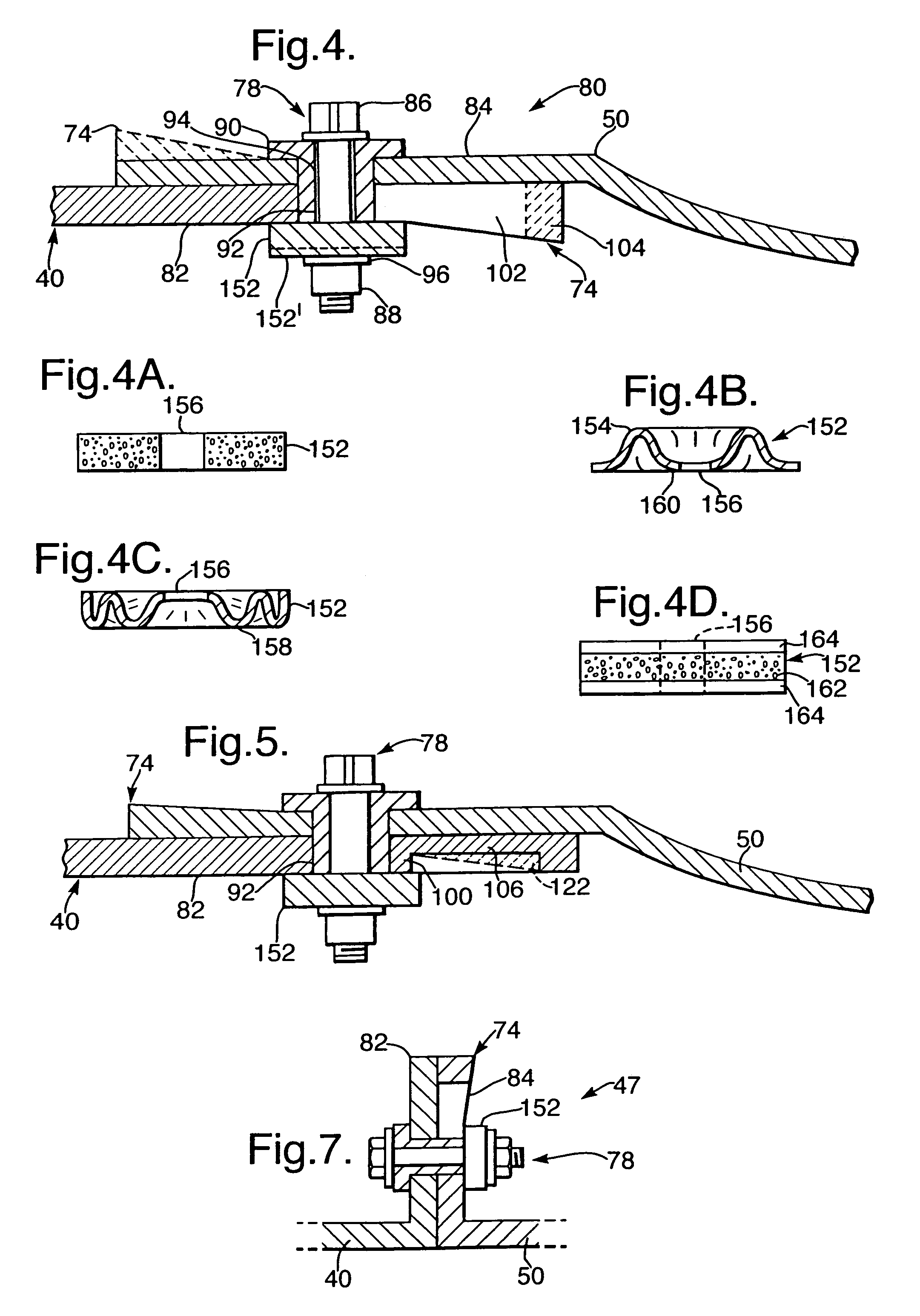Joint arrangement
a joint arrangement and joint technology, applied in the direction of couplings, traffic signals, roads, etc., can solve the problems of affecting the performance of the joint, and allowing an unwanted and substantial degree of movement of the joint, so as to achieve less weight, less deformation, and more conformity.
- Summary
- Abstract
- Description
- Claims
- Application Information
AI Technical Summary
Benefits of technology
Problems solved by technology
Method used
Image
Examples
first embodiment
[0037]Referring now to FIG. 4, a joint arrangement 80 comprises overlapping portions 82 and 84 of the casing 40 and rear fan casing 50 respectively. The joint arrangement is an exemplary embodiment of the present invention and is intended to replace the prior art flanged joint 47 (and 41). In this first embodiment a first member is defined by the metal casing 40 and a second member is defined by the rear fan casing 50. The first and second members 40, 50 define the overlapping portions 82, 84. In this example the overlapping portions 82, 84 are arranged in conventional fashion and are generally annular in configuration although that is not necessary for other applications of the present invention. The overlapping portions 8284 are secured together by a hollow pin 90, inserted through corresponding radially aligned holes 92 and 94 defined therein respectively. A bolt 86 extends through the hollow pin 90 and co-operates with a nut 88 and washer 96 in conventional fashion to secure the...
third embodiment
[0050]Referring to FIG. 6, the joint arrangement 80 of this third embodiment comprises the casing 40 defining a tongue portion 170 which cooperates with a groove portion 172 defined by the rear fan casing 50. Like elements are given like numerals as shown in other Figures and operate in similar manner. Each overlapping portion 174 or annular finger 174 of the groove portion 172 comprises a wedge shaped portion 74. The securing means 78 comprises a deformable member 152 disposed between the annular finger 174 and bolt 86 and nut 88 respectively.
[0051]The deformable members 152 are preferably identical as are the wedge shaped portion 74. However, the deformable members 152 may be of different compressibility so as to have an overall increase in resistance part way along the full axial extension of the joint.
[0052]Alternatively, only one annular finger comprises a wedge shaped portion 74 and only one deformable washer 152 may be provided.
[0053]A further aspect of the present invention ...
fourth embodiment
[0055]A fourth embodiment in FIG. 7 comprises the present invention applied to a conventional bolt flange joint 47. The securing means 78 is configured as any other embodiment described herein as are the overlapping portions 82, 84. This embodiment is employed where any axial movement required during a fan blade off event is accommodated by another feature elsewhere on the casing 40, containments casing 38 or rear fan casing 50. Essentially this joint is capable of accommodating radial loads in similar fashion to the previous embodiments that substantially accommodate relative axial displacements between overlapping portions.
PUM
 Login to View More
Login to View More Abstract
Description
Claims
Application Information
 Login to View More
Login to View More - R&D
- Intellectual Property
- Life Sciences
- Materials
- Tech Scout
- Unparalleled Data Quality
- Higher Quality Content
- 60% Fewer Hallucinations
Browse by: Latest US Patents, China's latest patents, Technical Efficacy Thesaurus, Application Domain, Technology Topic, Popular Technical Reports.
© 2025 PatSnap. All rights reserved.Legal|Privacy policy|Modern Slavery Act Transparency Statement|Sitemap|About US| Contact US: help@patsnap.com



